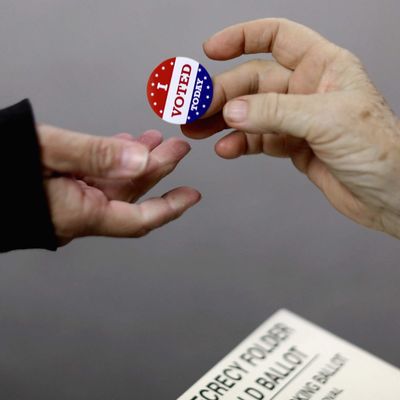
One of the things political junkies tend to do at this juncture of an election cycle is to start examining polls to see if they are measuring “likely voters” as opposed to “registered voters” or even some less selective sample like “adults.” The closer you get to Election Day, the more pollsters tend to focus on “LVs,” though they vary significantly in how they determine likelihood to vote (some focus on what voters tell them, others on voting history, and still others include both).
Recently, Republicans have usually done better after polls began applying a “likely voter screen,” mainly because they are disproportionally drawn from high-turnout segments of the electorate (older, whiter, wealthier, and more highly educated people), though sometimes because they appear to be more enthusiastic in support of their candidates. Some Trump supporters have hoped that their candidate would get a bump in LV polls. As Nate Silver reports today, though, all elections are not the same in this respect:
The difference between likely-voter and registered-voter polls tends to be smaller in presidential election years. In fact, it probably should be fairly small since most registered voters — somewhere north of 80 percent, according to the Current Population Survey — turn out to vote. In 2008 — a year of profound Democratic enthusiasm behind Barack Obama — there was almost no difference between registered- and likely-voter polls. In 2012, there was a gap, with Mitt Romney gaining a net of about 2 points in likely-voter surveys. Given that likely-voter polls underestimated Obama’s performance in the end, however, perhaps that was too much.
Trump’s LV advantage so far, by Silver’s calculation, is 0.8 percent.
Most [polls] show somewhere between a 1-point gap favoring Clinton and a 2-point gap favoring Trump … [T]aken as a whole, the consensus is that there’s at most a modest advantage for Trump in the likely-voter electorate, somewhat less than a Republican candidate would typically receive.






























